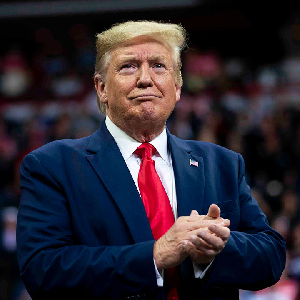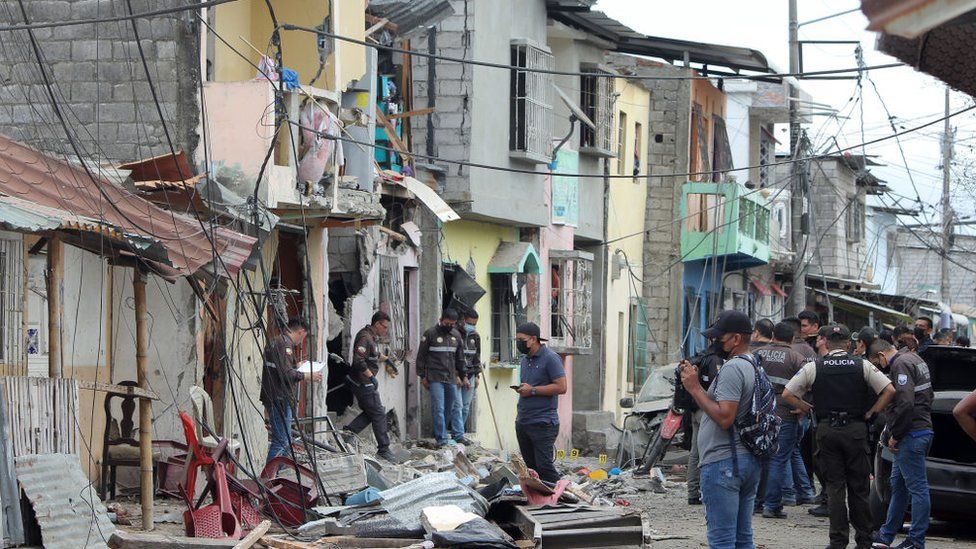Canada to slap 25% tariff on $155 billion of U.S. goods after Trump initiates trade war

In retaliation for U.S. President Donald Trump’s tariffs, Canada is slapping 25 per cent tariffs on $155 billion worth of American goods.
Prime Minister Justin Trudeau’s reciprocal response comes as he and Trump have yet to even speak about the exchange of massive trade action, he revealed in a lengthy press conference Saturday evening.
Canada’s countermeasures will include immediate tariffs on $30 billion worth of goods as of Tuesday, followed by further tariffs on $125 billion worth of American products in 21 days time, to allow Canadian companies and supply chains to find alternatives.
Trudeau announced the federal government’s phased approach in an address to Canadians from Parliament Hill, during which he implored citizens to “choose Canada” when making purchases and travel plans.
“It might mean opting for Canadian rye over Kentucky bourbon, or forgoing Florida orange juice altogether,” he said. “Unfortunately, the actions taken today by the White House, split us apart instead of bringing us together.”
In his comments, Trudeau also noted the “real” consequences for Americans of Trump’s decision to hit Canada with a 25 per cent broad-based tariff on imports, as well as a 10 per cent tariff on energy.
“Tariffs against Canada will put your jobs at risk, potentially shutting down American auto assembly plants and other manufacturing facilities. They will raise costs for you, including food at the grocery stores, gas at the pump,” Trudeau said.
Among the items Trudeau says will soon start to cost U.S. consumers more are beer, wine, vegetables, clothing, shoes, household appliances, furniture, and sporting goods.
The prime minister said Canada is also considering “several” non-tariff measures related to energy and minerals, but those steps would be further developed in co-ordination with the provinces and territories.
“What is extremely important for me, and I think for all the premiers is that no one region of the country or one industry carries a larger burden than anyone else,” Trudeau said. “This only works if Canadians are fully united.”
The major announcement comes on the heels of weeks of anticipation and diplomatic efforts to avoid this moment, and after Trudeau meet with his cabinet and premiers on Saturday to discuss the national and historic response.
“If President Trump wants to usher in a new golden age for the United States, the better path is to partner with Canada, not to punish us,” Trudeau said, later noting that he’s been “reaching out” to Trump since his inauguration and he hopes “to speak with him sometime soon.”
Trump strikes first, tariffs take effect Tuesday
Trump made good on his threat to hit Canada with massive tariffs, signing an executive order imposing them on Saturday afternoon. The tariffs are expected to come into effect as of 12:01 a.m. on Tuesday.
On Saturday morning, the federal government was notified by the U.S. that Canada, Mexico and China were going to be hit.
Trump’s trade adviser Peter Navaro said in a call with reporters on Saturday that the energy tariff Canada would include electricity, natural gas, and oil.
Mexico is being hit with 25 per cent tariffs on all imports, including energy, while China is being subjected to a 10 per cent tariff across the board.
Shortly after receiving confirmation tariffs are coming, Trudeau held an emergency meeting with his cabinet ministers, and then convened a call with premiers where he briefed them on Canada’s initial retaliatory response.
One source in cabinet told CTV News that afternoon that they would not be surprised if Trump doubled his tariffs in response to Canada’s retaliation.
“We didn’t ask for this, but we will not back down,” Trudeau said.
Before his public address, Trudeau confirmed the looming U.S. tariff imposition on social media, and had a call with Mexican President Claudia Sheinbaum.
Sheinbaum has similarly ordered her Secretary of Economy to implement tariffs and non-tariff measures, to defend Mexico’s interests.
Federal and provincial governments have been co-ordinating for several weeks on a retaliation plan, and have been engaging with and leveraging stakeholders as part of a broader “Team Canada” approach.
Reaction from premiers streamed in from coast to coast ahead of Trudeau’s announcement. British Columbia’s Premier David Eby called Trump’s tariffs a “complete betrayal of the historic bond between our countries,” and revealed he was ordering provincial liquor stores to stop stocking alcohol from Republican states.
Other premiers have taken similar steps, voicing support for using all tools Canada can to end the tariffs.
How Trump is justifying tariffs
According to a White House “fact sheet” Trump is imposing the tariffs to address a national “emergency situation,” and “public health crisis.”
Trump took this incredibly consequential economic swipe from his Mar-a-Lago club.
“The extraordinary threat posed by illegal aliens and drugs, including deadly fentanyl, constitutes a national emergency under the International Emergency Economic Powers Act (IEEPA),” reads the Trump administration’s rationale.
“President Trump is taking bold action to hold Mexico, Canada, and China accountable to their promises of halting illegal immigration and stopping poisonous fentanyl and other drugs from flowing into our country.”
As sources had indicated to CTV News earlier Saturday, Trump intends to keep the tariffs in place “until the crisis is alleviated.”
The White House claims Trump is leveraging America’s economic position “as a tool to secure our borders,” and that when voters elected him, they gave him a mandate to take this action.
Less than one per cent of fentanyl and illegal crossings into the United States come from Canada, with U.S. Customs and Border Protection seizing just 43 pounds of fentanyl at the northern border in the 2024 fiscal year.
Federal officials in Canada have repeatedly emphasized these and similar statistics, while initiating rounds of lobbying efforts with D.C. officials about Canada’s $1.3-billion border security enhancements in the face of Trump’s demand to crack down on the flow of migrants and drugs at the northern border.
That border plan includes deploying additional personnel, drones, surveillance equipment and helicopters to patrol the border.
Reacting to Trump’s trade action, Conservative Leader Pierre Poilievre said “we must put Canada first.”
Poilievre said his party condemns Trump’s “massive, unjust and unjustified tariffs on Canada’s already weak economy.”
Reviving his call for the federal Liberals to recall Parliament, Poilievre pointed to his six-pronged plan to address the tariffs, including retaliating with dollar-for-dollar tariffs, while trying to minimize the impact on Canadians.
NDP Leader Jagmeet Singh said what Trump has done is “unleash an unprecedented trade war on our country.”
“It is urgent that the government is ready to put financial help into the hands of workers who are impacted, and that we protect as many jobs as possible with a strong commitment to buy Canadian,” Singh said.
“We also need to pressure Trump to back off, and that means putting retaliatory tariffs in place urgently, and cutting off the supply of critical minerals to the United States.”
Singh also echoed Poilievre’s call to bring the House of Commons back in session. Parliament is currently prorogued – a step Trudeau took when he announced his resignation to give his party time to run the now-ongoing race to replace him – and isn’t scheduled to resume until March 24.
While Canada can enact counter tariffs through policy measures that don’t require legislative approval, sources have told CTV News that the federal government is also planning a potentially pandemic-sized stimulus package to help businesses and workers.
That relief, while the depth of it is dependent on what Trump dishes out, would likely require parliamentary sign-off as it would involve new spending measures.
Asked Saturday night whether he intends to bring Parliament back, the prime minister suggested he has the tools he needs in the short-term to act.
Tariffs will raise prices on both sides of border
Confirmation that the U.S. is sparking a trade war with its closest ally comes after weeks of evolving messaging from the president and his officials about the size, scope, and timeline for tariffs.
Just yesterday, U.S. sources floated a March 1 start to Reuters, which Trump shot down within hours, affirming there was “nothing” Canada could do to avoid the imposition of Feb. 1 tariffs.
Trump initially threatened in late November to impose across-the-board 25 per cent tariffs on all imports from Canada and Mexico on “Day 1” of his second term.
That didn’t happen. Instead, he signed an executive order initiating a study on broader trade practices, to be completed by April 1.
To offer a snapshot of the scope of the bilateral relationship, Canada buys more U.S. goods than China, Japan, France and the United Kingdom combined. The U.S. sells more goods to Canada than any other country.
Canadian officials have repeatedly sought to emphasize that Trump’s tariffs will raise prices for consumers on both sides of the border.
A 25 per cent tariff could shrink Canada’s GDP by 2.6 per cent and cost Canadian households an average of $1,900 annually. South of the border, it would result in a 1.6 per cent GDP drop and an average $1,300 hit to American households.
On a daily basis, $3.6 billion in goods and services cross between Canada and the U.S., making for a $1.3 trillion annual trading relationship that employs millions on both sides of the border, according to the Canadian Chamber of Commerce.
Of note, given Trump has decided to tariff energy, Canada is the number one supplier of energy to the U.S., supplying more than 99 per cent of U.S. natural gas imports, 85 per cent of U.S. electricity imports, and 60 per cent of U.S. crude oil imports, in 2023.
And, despite Trump’s repeated assertions of an unfair trade deficit with Canada, when oil exports are excluded, the U.S. has a trade surplus with Canada, according to federal data.
Reacting to the tariffs, the U.S. Chamber of Commerce said trade tensions “won’t solve” the problems Trump wants them to.
In a statement, the Chamber said instead they will “only raise prices for American families and upend supply chains.”
Source: bloomberg.com





